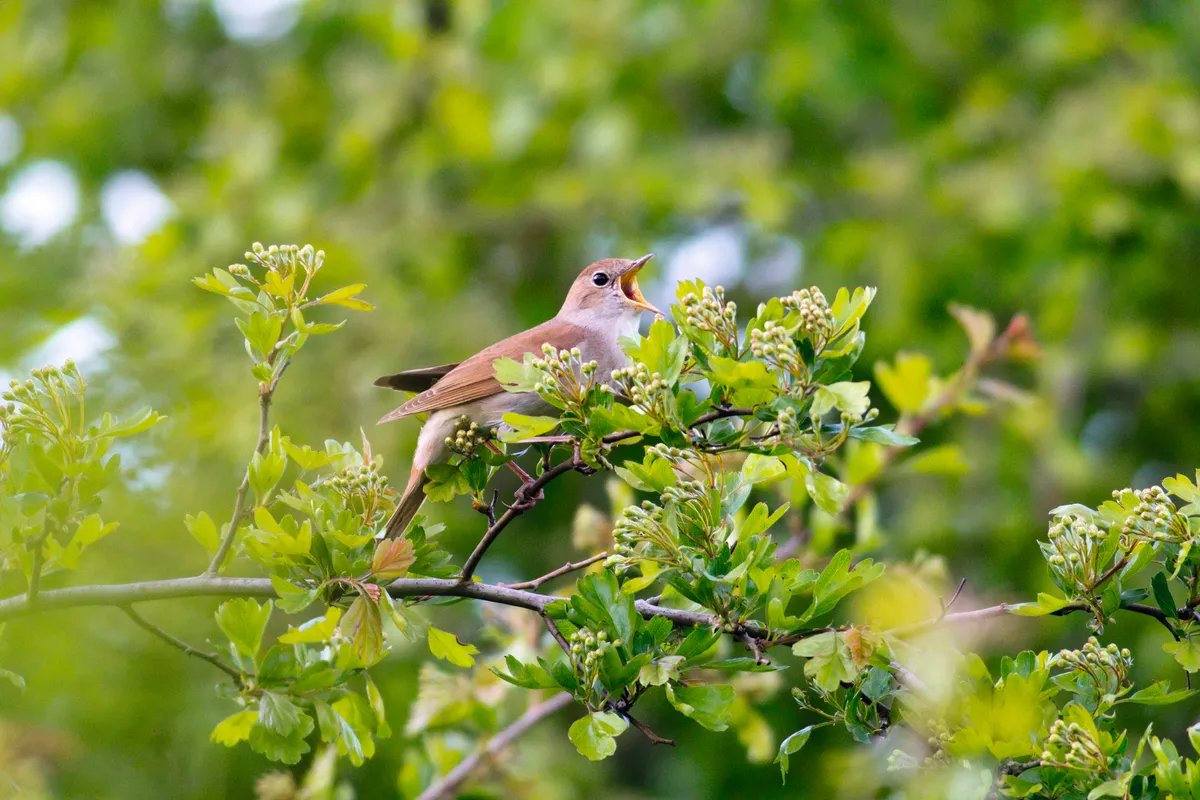Fruit blossoms are just one element of Kent’s bounteous offering. This is a county of gorgeously diverse landscapes, studded with pretty villages and blessed with two official Areas of Outstanding Natural Beauty (AONB): the Kent Downs and the High Weald. The Downs is 70% ancient woodlands, where the flora can include masses of wood anemone and bluebells.
On these uplands you will also find pockets of chalk grassland, where the nutrient-poor soil is ideal for wildflowers, such as cowslips, bird’s-foot trefoil and spider orchids, as well as the animals, birds and invertebrates that feed on them.
South of the Downs come the clay soils of Kent’s Low Weald, more suited to farming. Rising above those farm fields are oast houses, in which hops, one of Kent’s key crops, were once dried. With that process now mechanised, these striking pieces of architecture, conically shaped and topped with a white cowl, nowadays serve as homes and holiday lets.
Oast houses are one of the most distinctive features of this heartland of Kent, east of the river Medway. Spanning from the northern Faversham fruit belt down through the ancient forests of Blean to the gently rolling Wealden countryside around Sissinghurst and Scotney Castle, it’s all an absolute joy to explore.
Find out more about the 'Garden of England' with our holiday guide to Kent.

Places to visit in Kent
Brogdale Farm
Spring is one of the best times of year to visit Brogdale Farm, near the old market town of Faversham in north-east Kent. Amid the orchards of the National Fruit Collection, sunlight filters through fresh green leaves and the ethereal pink and white petals of cherry blossom, dappling the ground below. It's in spring when groups of visitors come to enjoy hanami – ‘flower viewing’– the Japanese custom of appreciating the transient beauty of the blossoms.
Blossoming fruit trees have been a feature of the Kent landscape in spring for at least 2,000 years, ever since the Romans brought their taste for apples and pears to Britain. From February with plums, through to the end of May for apples, Brogdale’s 60 hectares are awash with fluffy clouds of blossom, predominantly white, with pink and rose from the apple and ornamental cherry trees. It’s a spectacle that, according to Pippa Palmar of Kent Wildlife Trust (KWT) and a former expert at the National Fruit Collection, is “like ballet dancers pirouetting through the grass”.
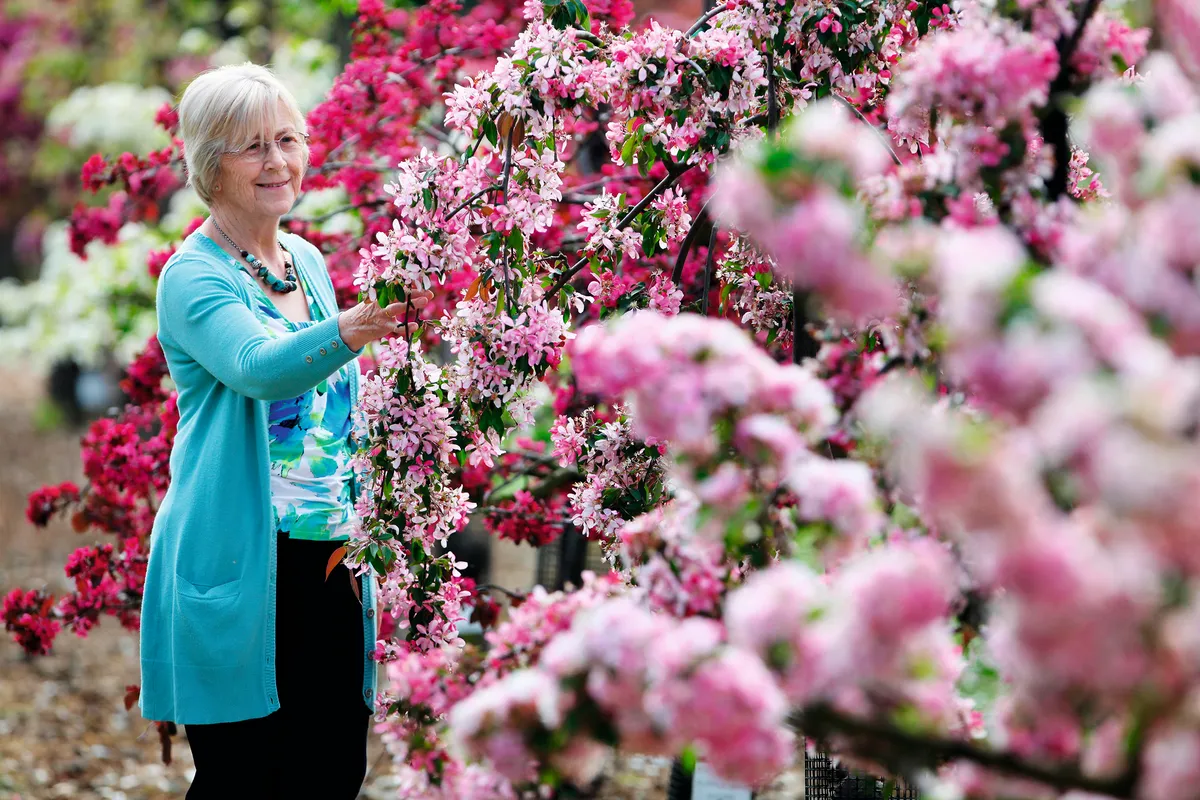
Cherry Downs
Henry VIII is often given credit for branding Kent the ‘Garden of England’, supposedly after enjoying a bowl of Kentish cherries. Traditional orchards on Brogdale’s scale are now noticeably absent from Kent. But what you will find, if you look carefully, is a handful of smaller community orchards, such as Cherry Downs, also known as Lenham Orchard, tucked away a short walk off the North Downs Way, eight miles south-west of Faversham.
At Cherry Downs, you can savour the blossoms of sour Morello cherry, sweet cherry and plum trees while enjoying commanding views from the greensand ridge out towards Romney Marsh. Cherry Downs also has apple and pear trees and a cobnut plantation – cobnuts (a variety of hazelnut) being another Kent horticultural speciality. It’s one of 15 community orchards that are part of the Kent Orchards for Everyone project, started by the Kent Downs AONB.
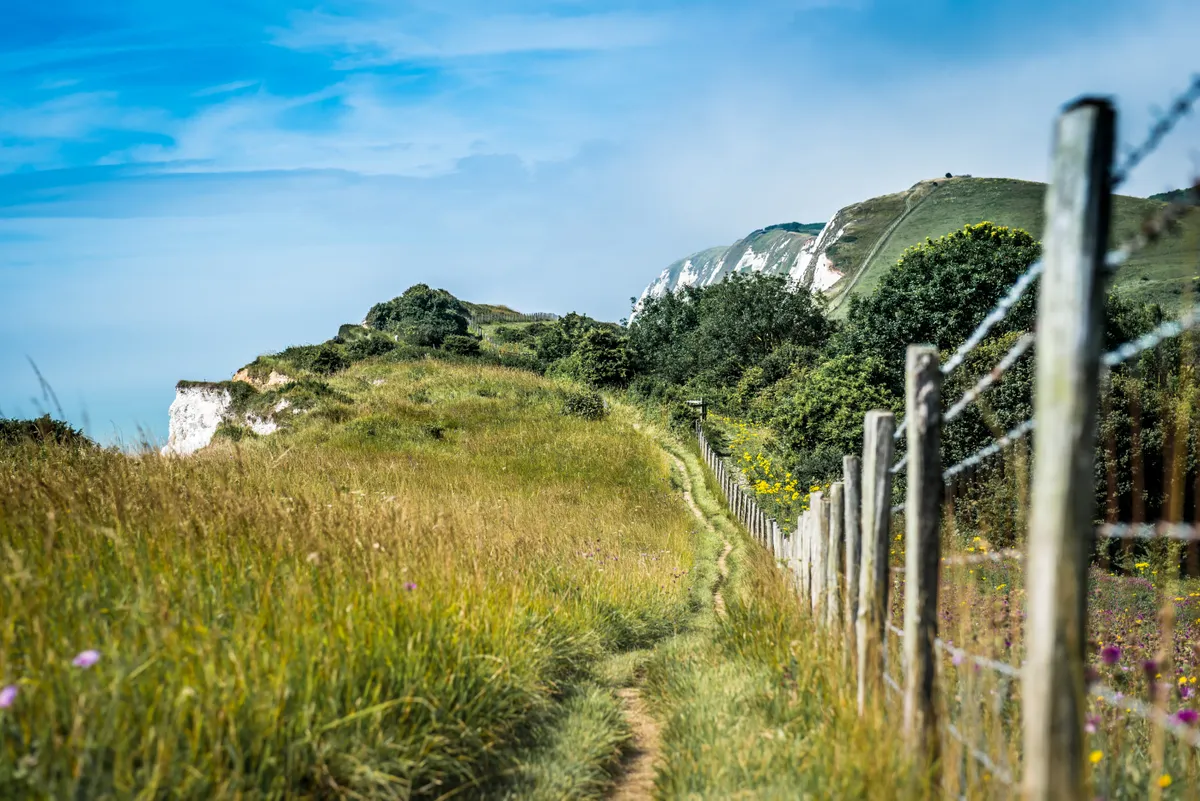
Blean Woods National Nature Reserve
Aeons before orchards were planted, Kent was covered with dense forests. Blean Woods National Nature Reserve is a series of adjacent ancient woodlands north of Canterbury, including Thornden Wood, East and West Blean Woods and Clowes Wood. A spring walk here is packed with interest, from leaves appearing on the oaks and silver birch, to catkins on the coppiced sweet chestnuts and wildflowers such as common cow-wheat (the food of the very rare heath fritillary butterfly) speckling the undergrowth.
If you notice a vibrating mound of soil, twigs, leaves and pine needles, it will be a nest of southern wood ants; they are at their most active in spring as the queen of each colony starts to breed. Listen up and you may catch the rich musicality of nightingales singing or the tap against timber of the lesser spotted woodpecker, Britain’s rarest woodpecker species.
Leeds Castle
By April, Kent’s many splendid gardens are bursting into colourful life. Crowds of visitors descend on historic estates, such as Leeds Castle, five miles east of Maidstone, where swathes of daffodils in shades of sunshine yellow, lemon and tangerine sway in the breeze beside the moat.
In the castle’s Culpeper Garden, low box hedges frame beds bursting with jewel-coloured tulips and irises, while in the Oriental Garden, flowering cherry trees and banks of azalea bushes add their pink and rose tones to the party.

Godinton House
Scallop-shaped yew hedges, formal flower borders and classical statuary mark out the gardens around 14th-century Godinton House, 14 miles south-east of Leeds Castle. One of Kent’s hidden horticultural gems, the gardens were planned by the celebrated architect Sir Reginald Blomfield in 1902 and are beautiful throughout spring.
A key feature of Blomfield’s design is the formal lily pool, which is fed by springs that he discovered; he also channelled the water to a pond in the Wild Garden. This is Godinton’s spring glory – a Wordsworthian carpet of daffodils, fritillaries and primroses beneath holly, oak, magnolia and pine.
Also coming into its own later in spring is Godinton’s Italian Garden, its colonnaded entrance dripping with cascades of lilac wisteria, its heady scent competing with that of the nearby Mexican orange blossoms. New head gardener Josh Taylor and deputy Sarah Lane have also added scores of new varieties of narcissi and tulips around the garden, sprouting from pots and splashed among the borders, bringing shades of orange, pink and purple to the spring show.
Scotney Castle Estate
The Kent Weald stretches from the coast to the sandstone and greensand escarpment of the High Weald of Sussex. Here, sinuous, deep-set country roads shadow the old droveways – paths beaten through the old woodlands over the centuries by droves of pigs and flocks of sheep herded from high to low ground and back again depending on the seasons.
A droveway runs across the woodland and parkland of the Scotney Castle Estate, a National Trust property eight miles east of Tunbridge Wells. Spring is a splendid time to visit this poster child of the Weald. Cloud-pruned bushes of azalea and rhododendrons, thick with purple, mauve and white flowers, frame the view down the quarry slope to Scotney’s old castle, its ruined walls clothed in the drooping racemes of fragrant Chinese wisteria.
Follow trails into Scotney’s woodlands to marvel at the carpets of English bluebells and the delicate pale-pink cuckooflowers, also known as Lady’s smock, over which flutter large yellow brimstone butterflies. Along the banks of the River Bewl, which flows through the estate, your eye may catch the flashing turquoise plumage of a kingfisher.

Sissinghurst
Lambs gambolling about the fields and suckling their mothers remain a common spring sight around the 186-hectare Sissinghust Estate, 11 miles east of Scotney. Sissinghurst is easily Kent’s most famous garden, but in 1930, when the writer Vita Sackville-West and her husband, the diplomat Harold Nicolson, first came to assess the property as their prospective home, there was no garden here. Among the many things that attracted them to the ruined castle and its farm were the remains of a Victorian fruit orchard and nuttery. Vita turned the orchard into her wild garden, scattering it with drifts of daffodils and crocuses, while Harold zoned in on the nuttery, making it the end focus for his Lime Walk – two rows of pleached limes flanking a central pathway of York stone, the trees underplanted with beds of spring flowers. It was a part of the garden that he particularly cherished, dubbing it “my life’s work” or “MLW”.
Head gardener Troy Scott Smith likes to refer to the Lime Walk as the spring garden, because that’s when it is at its best. But, in truth, many other sections of Sissinghurst shine during spring: the nuttery with its wood anemones, cyclamen and rare white English bluebells; the cottage garden with its pots of sunset-hued tulips; the white garden where the delicate blossom of quince trees add to its intimacy and romance; and the common poppies that provide vivid pops of red in the new Delos Garden of Mediterranean plants, created by Dan Pearson.
Standing atop the roof of the Tudor brick tower at the heart of Sissinghust, taking in panoramic views over the gardens and wider estate, it’s hard to imagine a sweeter spot in Kent to savour spring.
World Wild, Chartham
Miles Irving, author of acclaimed book The Forager Handbook, offers excellent hands-on foraging courses helping you track down and prepare seasonal wild plants, such as nettles, dandelions, dock and hogweed. worldwild.org.uk
Rare Breeds Centre, Woodchurch
Home to many uncommon and native breeds of livestock, this 40-hectare farm, five miles east of Tenterden, is the ideal spot to see spring lambs at close quarters. rarebreeds.org.uk
Frankie’s Farmshop, Staplehurst
One of Kent’s best-stocked farm shops, Frankie’s also has a good café. Next door is Staplehurst Nurseries, run by the same family and famous for its spring flowers and plants. frankiesfarmshop.co.uk

Where to eat and drink in Kent
There’s no shortage of fine places to eat as you travel from north to south across Kent. Start with breakfast and some grocery shopping in Faversham, have lunch near Hawkhurst and dine in Kilndown at one of the county’s epicurean treats.
Macknade, Faversham
Selling the best Kentish produce for over 40 years, Macknade’s farm complex includes a superb café, outdoor food stalls, food hall, butcher and wine shop. Another branch in Ashford has a café and deli counter. macknade.com
Water Lane, Hawkhurst
Dine within touching distance of the no-dig beds from which head chef Jed Wrobel picks seasonal produce for the restaurant in this wonderful walled garden. The Grade II Victorian glasshouses make this a magical spot. waterlane.net
The Small Holding, Kilndown
On the spring menu at chef Will Devlin’s charming restaurant in an old village pub expect to see ingredients grown in their plot or foraged from the surrounding woods. thesmallholding.restaurant
The Tickled Trout, Wye
On a warm spring day, enjoy your pint beside the languid Stour River in the beer garden of this 400-year-old pub. At the bar, sample craft beers and ciders from local breweries, including Canterbury Ales, Old Dairy Brewery and Kentish Pip Cider. thetickledtrout.co.uk
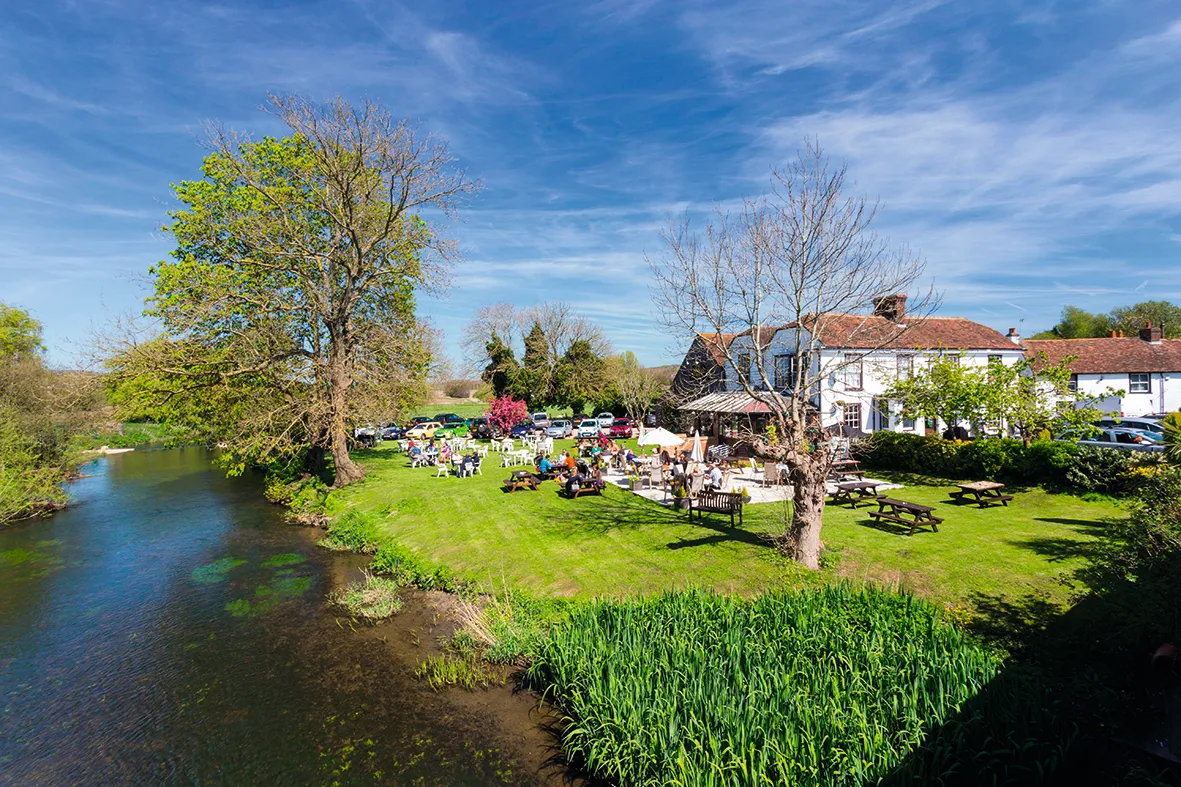
Where to stay in Kent
The Pig at Bridge Place, Bridge
The Pig Hotel group have worked their magic on this handsome 17th-century house, 4.6 miles south-east of Canterbury, playing up its heritage and adding on an excellent restaurant and a superb walled kitchen garden. Small double room from £185. thepighotel.com
Eastwell Manor, Boughton Lees
Pamper yourself at this luxurious Champney’s spa hotel, set in a landscaped estate north of Ashford with formal gardens and a heated outdoor swimming pool. Accommodation is in either the grand manor house or nearby mews cottages. Double rooms from £150. eastwellmanor.co.uk
Sissinghurst Castle Farmhouse, Sissinghurst
You can hardly get closer to Sissinghurst than this superb B&B occupying a handsome Victorian farmhouse, with its own gardens and an owner who is a Cordon Bleu cook. Double rooms from £195. sissinghurstcastlefarmhouse.co.uk
Walks in Kent
Wye to Devil’s Kneeling Trough
There are wide-ranging views across the Kent countryside from the top edge of the Devil’s Kneeling Trough. This deep, grass- and wildflower-covered gully in the North Downs was formed at the end of the last Ice Age, and can be reached on a 4.5-mile circular walk from the village of Wye.
Chilham to King’s Wood
Walk around five miles south-west from the pretty North Downs village of Chilham to King’s Wood, once used for hunting by royalty. It’s an important habitat for wildlife, such as the nightjar, and especially beautiful in late spring when bluebells cover the ground beneath oak, lime, beech and conifers.
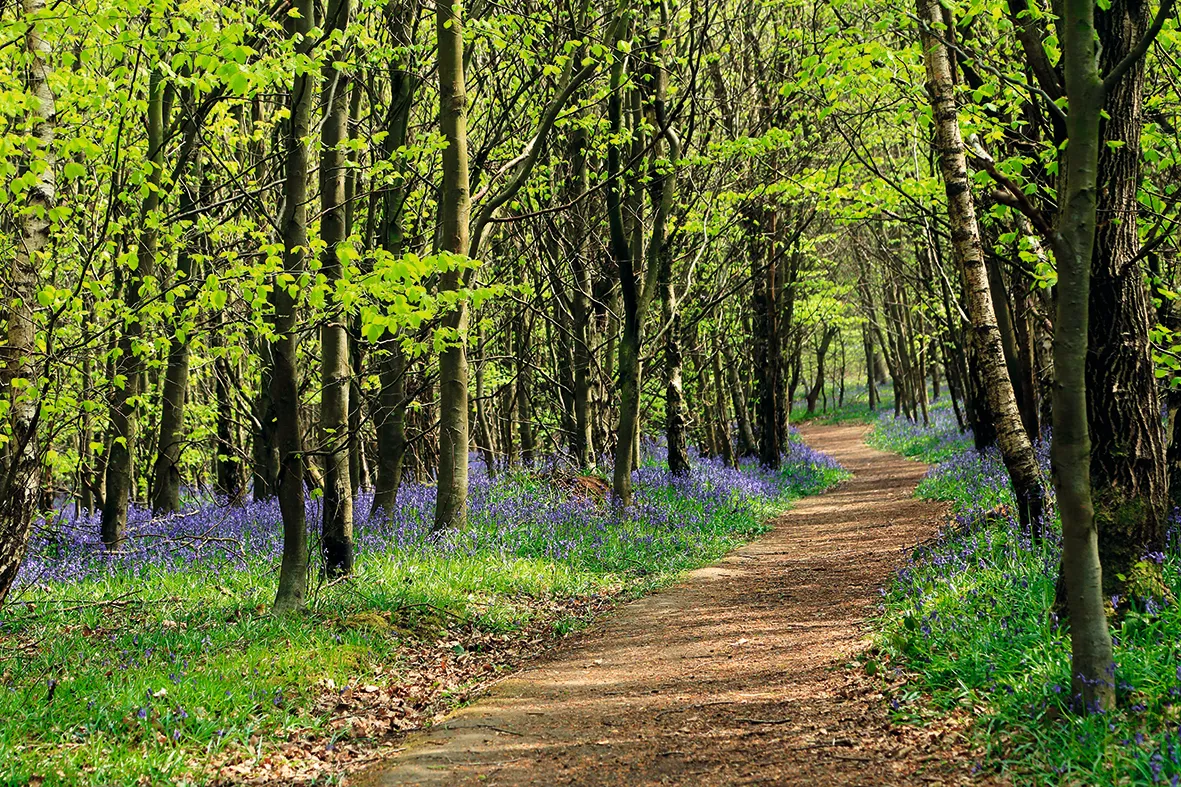
Cranbrook to Sissinghurst
Set aside a day to enjoy this circular walk from Cranbrook, which has a historic windmill and St Dunstan’s Church, referred to as the ‘Cathedral of the Weald’, at its heart. The 10-mile route traverses the undulating Weald countryside, offering superb views, particularly across Sissinghurst Castle Estate.
From Dover's staggering White Cliffs and the bustling seaside towns of the east coast, to the peaceful banks of the Medway River and the ancient remains of Coldrum Long Barrow, Kent has many landscapes worth exploring – discover them on foot with our favourite county walks.
© Getty
See nightingales in Kent
Kent is one of the few remaining strongholds of the nightingale. These shy migratory birds, who build their nests on scrub and woodland, have a trilling song that is synonymous with spring. According to Chas Holt, a nightingale expert at Kent Wildlife Trust, the bird is now a red-listed conservation priority, its population having declined precipitously in recent years.
But Chattenden Woods and Lodge Hill, on the Hoo Peninsula in Kent’s far north, is now one of the best places to hear nightingales in the UK. Over recent years, wildlife organisations have campaigned to save Lodge Hill, a Site of Special Scientific Interest, from being developed for housing. The proposed number of houses has been scaled back from 2,000 to 500, but the threats to nightingales remain. “We’re now at a point where protection of the best sites of nightingales and improved habitat management elsewhere is necessary if we are going to secure their future,” says Holt.
